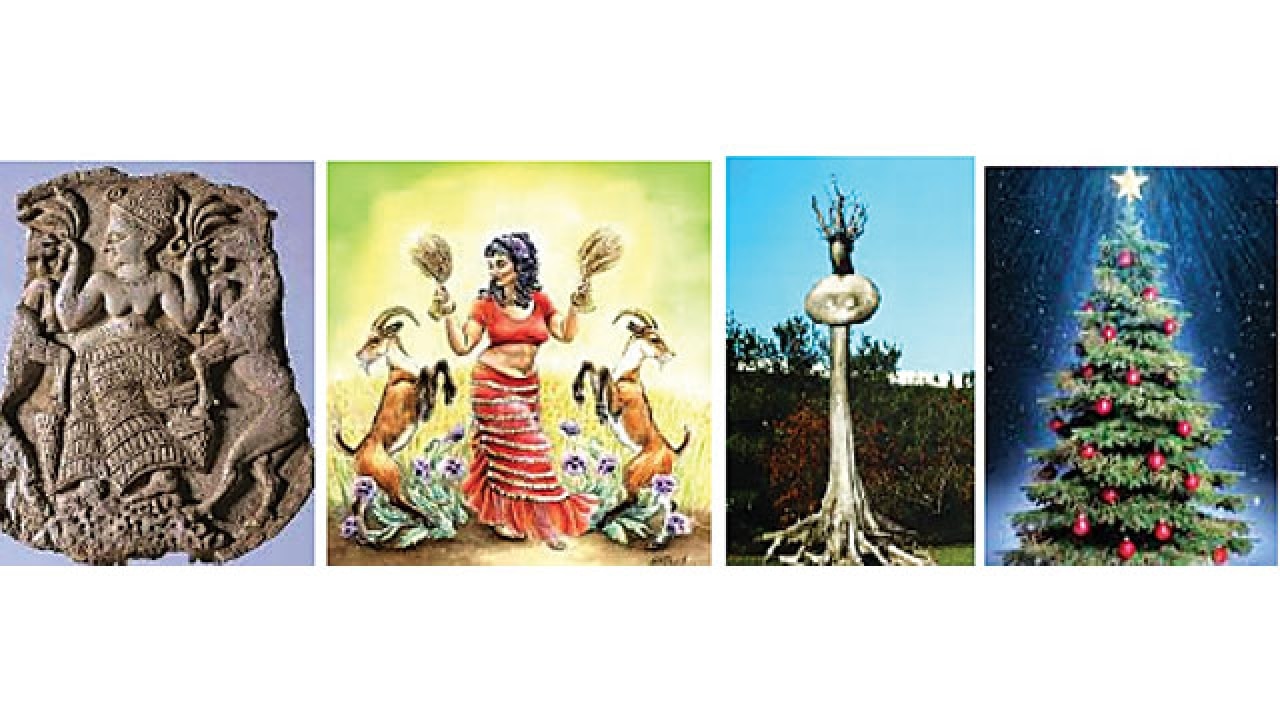
December 21st is the Winter Solstice, when we have the shortest day and the longest night. It is a day of great significance to ancient traditions across the world and in ancient Bharata. Ancient sky watchers observed the changes in celestial bodies. Often these astronomical events were celebrated by ancient people (whom the clergy contemptuously called ‘pagans’ and ‘heathens’) with a lot of fanfare, fun and joy.
Winter Solstice, Vernal Equinox, Summer Solstice, and Autumnal Equinox are the four events related to the motion of the Sun. Today they occur on December 21, March 20, June 20 and September 22, occasionally shifting to the next day once in a few years due to approximations in time calculations. The Mayan sky watchers called them the ‘four corners of the sky’.
This is because the ancients knew that the sky is the visual representation of a calendar and hence the events are locatable in the sky. This is reflected in the Bharatiya Vedic tradition in the concept of Nakshatra (nakt: night; kshatra: field), or the stellar map of the sky and Kalachakra, the wheel of time. Sky watchers of Bharata identified the sky much earlier than the Mayans of Meso-America, and conceived it as a giant clock —Kalachakra with the sun itself as its only clock-handle.
The sky was then divided into segments like in analog clocks with divisions numbering 12, 24, 360 and 720. To designate these, sky watchers used the position of bright stars, hand-held wooden devices, or constructs like Stonehenge.
Using these visual aids, they could measure the hours, seasons and the precession of the equinox. These three modes of time calculation (diurnal, yearly and precessional) are described in the Rig Veda as three modes of using the Kalachakra.
The discovery of subtle motions of the sun, which resulted in shifting the dates of the Equinox every few years due to wobbles in the earth’s spin axis, required centuries of observation, which was the case in the ancient Saraswati-Yamuna region (now Haryana) where settlements date back to 7570 BCE.
Mahabharata mentions this region as ‘the abode of Adityas’, which later generations revered as a holy land. The Adityas were originally counted as 7 corresponding with the number in Rigvedic verses. This later became 12 to represent the 12 divisions of the sky, 12 zodiacs and 12 months.
The seven Adityas, with Marthanda the eighth, were described in the Rigveda as the sons of Devamata Aditi. Martanda was rejected by Aditi as he was dead in the womb and born deformed. He was later resurrected, as Vivasvan/ Vivasvat. Puranas say it was sage Kasyapa Prajapati, Aditi’s husband, who rejuvenated him. Kasyapa was the equivalent of Dyaus (Zeus in Greek and Jupiter in Roman). This symbolism is indicative of the decay of the sun’s light during winter and its subsequent resurrection. The sun is at its weakest on Winter Solstice. In later Puranic tradition, Vivasvat became associated with the sun god.
But, among Indo Europeans, who migrated from the Sarasvati-Yamuna region to the west, the tradition got transposed onto Aditi’s other child, the other sun-god Mitra. Thus, to the west of Saraswati, Mitra became a major Avestan deity in Zoroastrian tradition and in Rome, Mithraism became a major religion.
This religion was highly active when Christianity took root in Greece and Rome. To erase Mithraism from Greece and Rome, Christian clergy appropriated the symbolism of Mithraism. The most important part of this was the concept of resurrection.
The origins of resurrection are thus ancient. Mithra in the Roman tradition was also hailed as a Virgin-born Sun god, who was resurrected. Christianity finally transposed it to Jesus Christ.
The Winter Solstice Day, which fell on December 25 a few centuries back, originally celebrating the resurrection of Mithra, was fixed as the birthday of Jesus Christ. The day was a celebration of the commencement of increase in the apparent solar output.
The festival of Yule was celebrated by Celts and Saxons as the ‘the wheel of the year’ or ‘Yula’ or ‘Yugadi’ in India. The Christmas tree was appropriated from ancient Canaanite traditions, that worshipped goddess Asherah, Mother Nature. The Christmas tree was decorated with fertility symbols, holly and mistletoe, an aphrodisiac. Thus from star to tree, to Christmas itself, many elements can be traced back to ancient pre-Christian ancient traditions.
This article is excerpted with permission from IndiaFacts, a portal for Indic discourse.